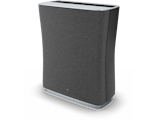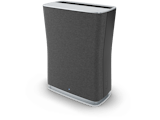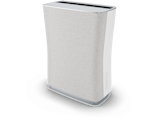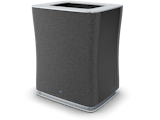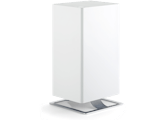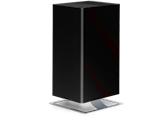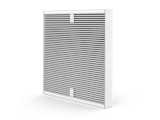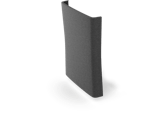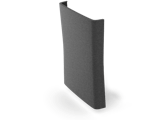Air purifier
Air purifiers filter the air and free it from fine dust, pollen, viruses, bacteria and other air pollution. Air purifiers clean the indoor air and ensure a greater sense of well-being. If the air purifier has an activated carbon filter, unpleasant odours, volatile organic compounds (VOCs) and other gaseous pollutants are also removed. Find the right air purifier for you now and breathe clean air every day.
Air purifier accessories
What an air purifier can do for you
Protect your whole family from pollutants: Air purifiers offer a safe way to remove harmful particles and impurities from the air.
Enjoy clean air all year round: Air purifiers ensure continuously purified air, regardless of external conditions.
Relief from respiratory problems: With an air purifier, you can remove allergens and pollutants from the air, which is particularly helpful for people with breathing problems such as asthma and allergy sufferers.
Restful sleep through improved air quality: Air purification helps to reduce allergens and dust, resulting in a healthier sleeping environment.
Reduce the spread of pathogens: An air purifier helps to filter viruses and bacteria from the air and thus reduce the risk of infection.
Customisation to individual needs: There are a variety of air purifiers that are specially tailored to different requirements and room sizes.
No more worries about bad odours: air purifiers not only eliminate allergens, but also unpleasant odours, which contributes to fresher indoor air overall.
Air purifiers improve general well-being: Air purifiers also clean the air of volatile organic compounds (VOCs) and, for example, tobacco and smoke particles and tobacco odours.
The world of air purification
Do you want to find out more about how an air purifier can help you feel better or how air purifiers neutralise odours? On our information page about air purification, we explain the causes and effects of polluted indoor air. We show you how an air purifier can help you with allergies, dust mites, unpleasant odours and much more.
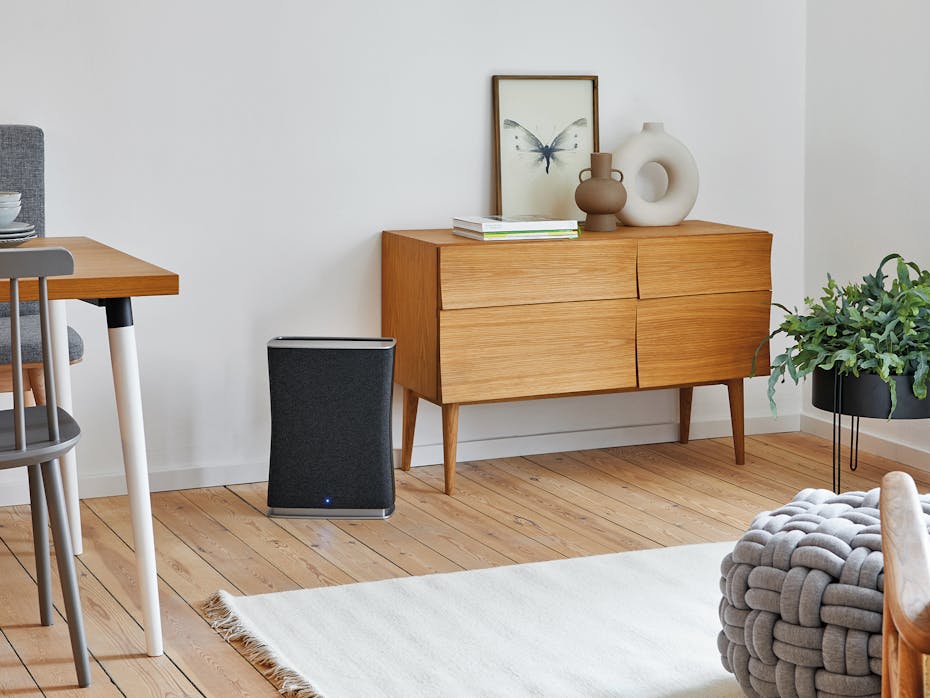
Buying an air purifier: what do you need to consider?
Not every air purifier is suitable for every room size. The larger the room, the higher the performance of the appliance needs to be. The "Clean Air Delivery Rate (CADR)" value can be an indicator. This figure indicates the amount of clean air produced. The larger the room, the higher the CADR value must be. Many manufacturers also indicate the appropriate m2 number.
There are different technologies: HEPA filters and electrostatic filters. Both filter particles, viruses, pollen and other contaminants from the air. The difference lies in the handling and cleaning performance. The HEPA filter must be replaced regularly. The electrostatic filter must be cleaned regularly.
Especially when using an air purifier in the living room, bedroom or office, it is advisable to pay attention to the decibel rating. Air purifiers should run continuously, as this is the only way they can purify the air sustainably. So that you are not disturbed by this, an appliance that is quiet on the low settings is an advantage.
Advice on purchasing an air purifier
Our air purifiers ensure a healthy indoor climate with significantly fewer particles, viruses, bacteria, bad odours and other pollutants in the air. In this video, Samuel explains the three most important points to consider when buying an air purifier: choice of technology activated carbon filter and room size.
Air purifier systems
There are various air purifier systems that use different technologies to filter pollutants, allergens, dust, bacteria, bad odours and other particles out of the air.
HEPA filters
HEPA filters are among the most common and effective methods of air purification. The abbreviation HEPA is an English acronym that stands for High Efficiency Particulate Air (filter). They consist of a dense fabric of randomly interwoven fibres that trap the smallest particles such as fine dust, pollen, mould spores and other allergens. HEPA filters are most effective for particles between 0.1 and 0.3 micrometres in size. HEPA filters cannot remove gases and odours. HEPA filters can be categorised into different filter classes. You can find an explanation in our blog post “Do I need a HEPA filter H14?”.
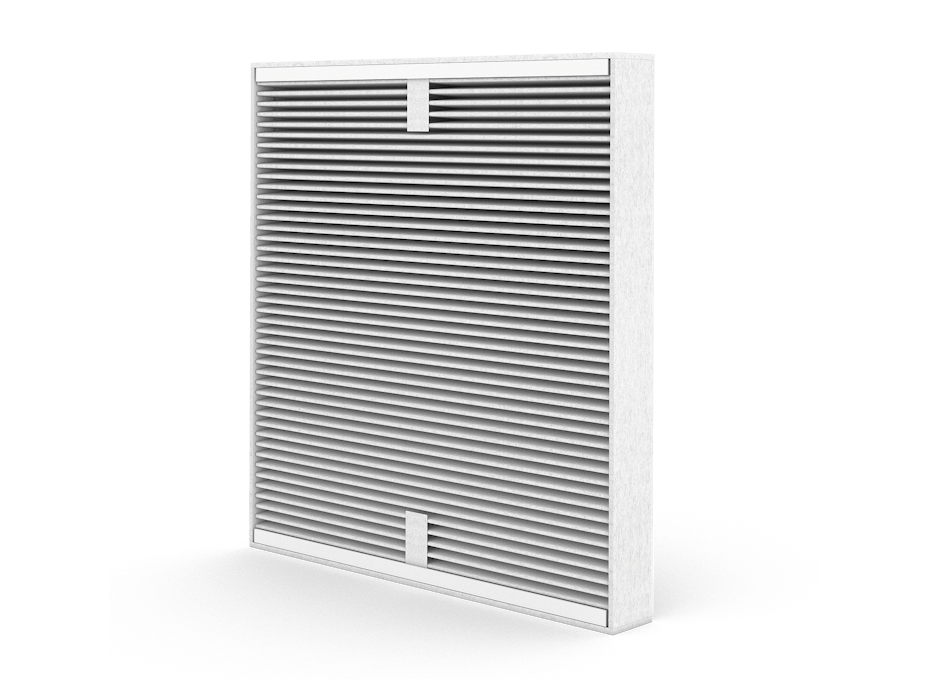
Activated carbon filter
Activated carbon filters are often used in combination with HEPA filters. They are particularly effective at removing gases and odours. Activated carbon is highly porous and has a large surface area that adsorbs pollutants such as smoke, bad odours or VOCs. However, activated carbon is not effective at filtering solid particles such as dust or pollen. Depending on the level of air pollution from gases and odours, activated carbon filters need to be replaced regularly, as activated carbon is quickly consumed.
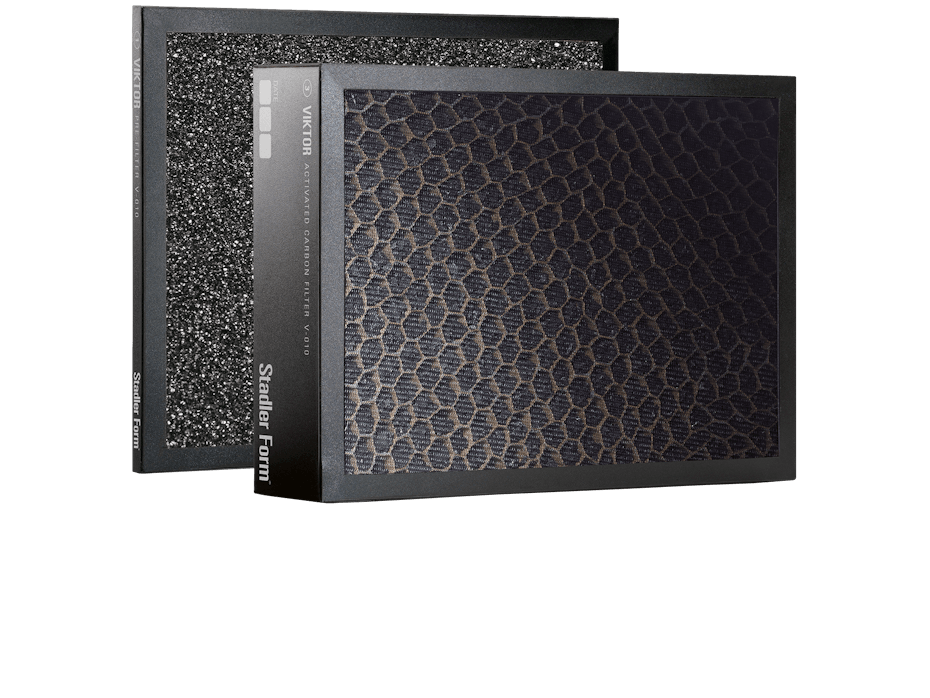
Pre-filters
Many air purifiers with filter technology have a pre-filter in addition to the main filter, which traps coarse impurities such as hair or dust. Regular cleaning or replacement, depending on the system, is important in order to extend the service life of the underlying filters.

Electrostatic filters
Electrostatic filters trap particles using an electrical charge. Electrostatic filters consist of two components. In the ionisation section, the particles receive a positive charge and in the collector section, the particles collect on special plates. The filters are less effective with smaller particles and need to be cleaned regularly by hand.
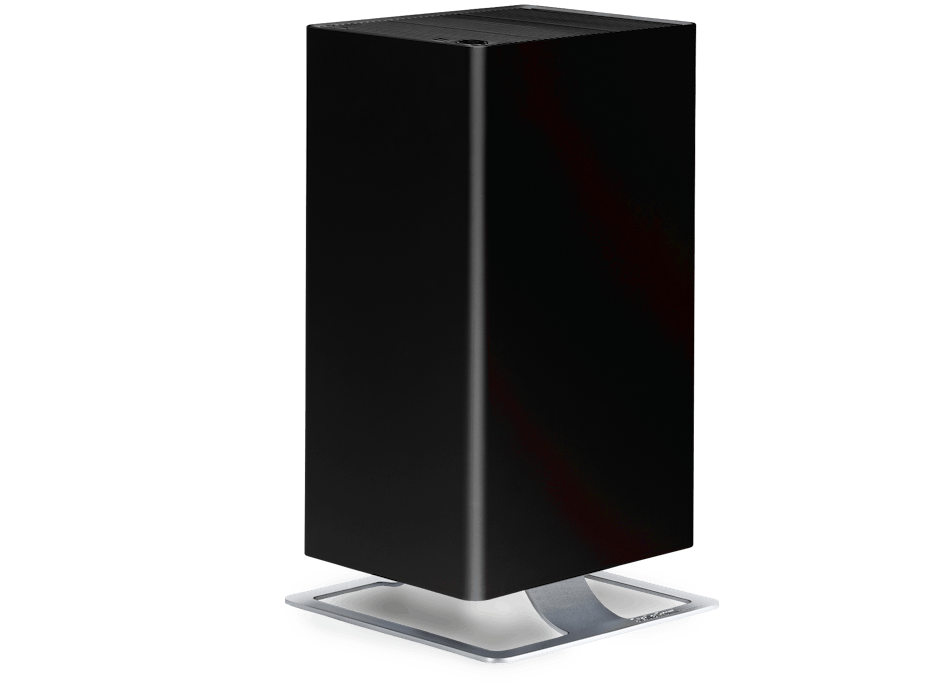
Ionisers
Ionisers work in a similar way to electrostatic filters. They release negatively charged ions into the room air which then attach themselves to particles, making them heavier and causing them to sink to the floor. However, ionisers do not completely clean the air, as the particles often simply sink to the floor or stick to surfaces instead of being removed from the room. In addition, ionisers can release ozone, which can be harmful to health.

UV-C air purifiers
These air purifiers use ultraviolet light to destroy bacteria, viruses and other microorganisms in the air and to sterilise the air. UV-C air purifiers are very effective at killing bacteria and viruses. However, they do not clean the air of particles or gases and only work if the microorganisms are exposed to UV radiation for a sufficient length of time.
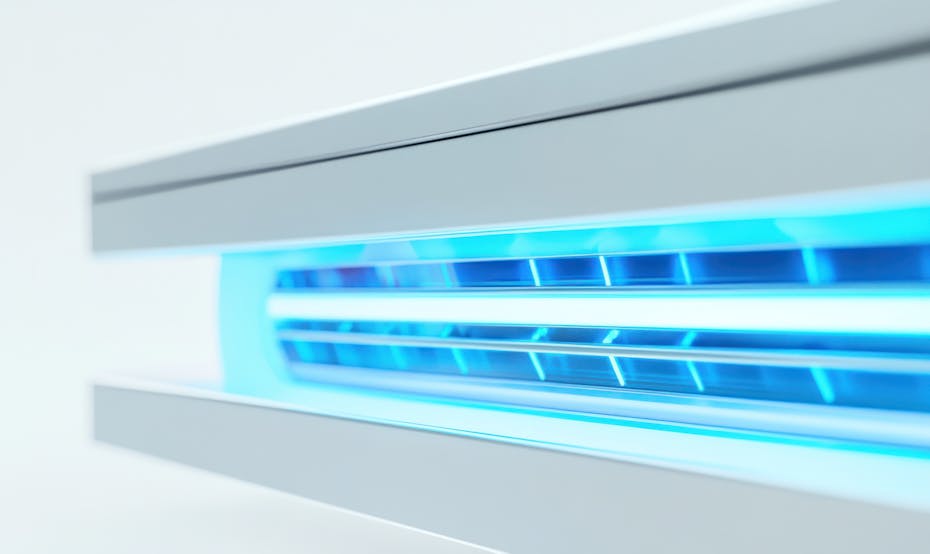
Air washers
Air washers are a combination of humidifier and air purifier. The air is washed and cleaned by discs that rotate in water inside the device. The humidified and cleaned air is then released back into the room. With its two-in-one function, an air washer ensures an optimal indoor climate and supports good health. However, air washers are less effective than other air purifier systems when it comes to smallest particles or gases.
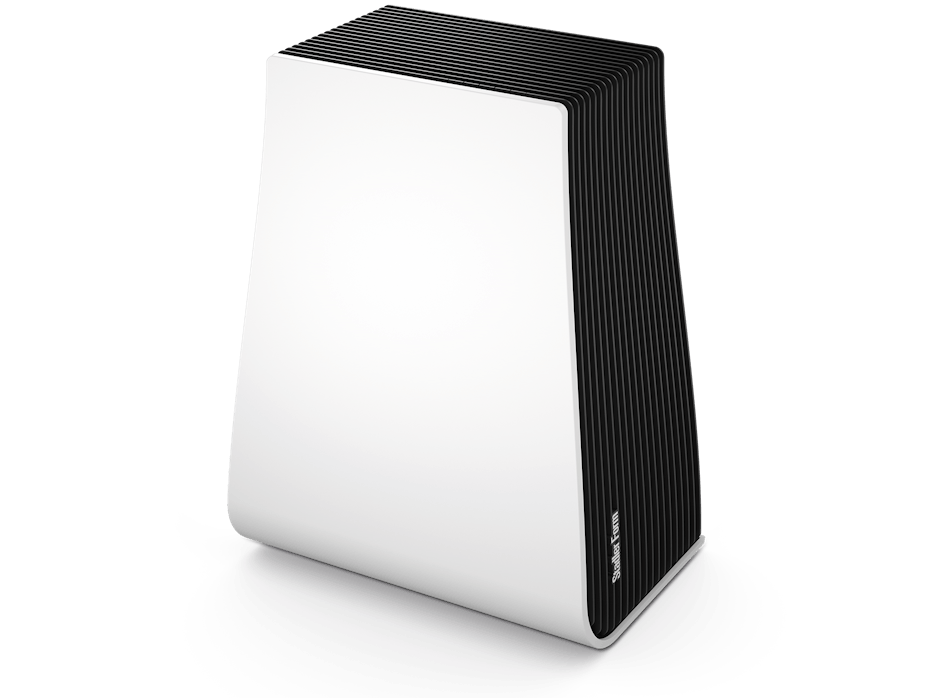
Hybrid air purifiers
Many air purifiers combine systems, for example, there are air purifiers that use a pre-filter, HEPA filter and activated carbon filter. This enables a very comprehensive air purification, since different pollutants are tackled in different ways.
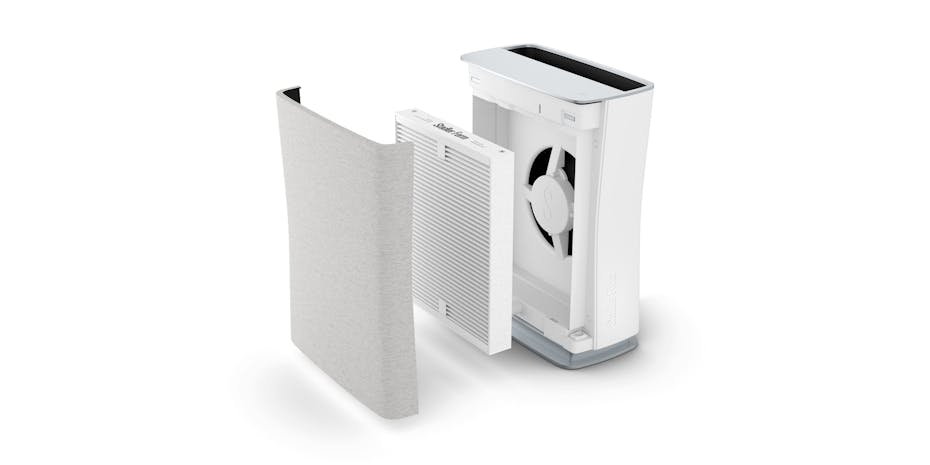
In addition to the systems mentioned above, there are also ozone air purifiers. However, these are only used for extreme odours and are banned for domestic use in many countries. They may only be used by qualified technicians.
Häufig gestellte Fragen
Yes, air purifiers can be very useful for allergy sufferers as they can filter allergens such as pollen, house dust mites and animal hair from the air, which reduces the burden on allergy sufferers. If the air humidity is lower than 40 %, an air washer is recommended, as these also ensure optimum humidity and thus keep the mucous membranes moist, which can also alleviate the symptoms of allergy sufferers.
Yes, air purifiers are effective in reducing dust particles in the air. They filter out floating dust particles and thus improve the air quality in closed rooms.
Yes, if the air purifier has an activated carbon filter. Then an air purifier can help to adsorb unpleasant odours and make the air fresher. They are therefore effective in eliminating odours in indoor spaces.
Viruses and bacteria can be efficiently filtered out of the air with an air purifier. When used correctly, air purifiers can help to reduce pollutants in the air, including viruses. An air purifier helps to reduce the risk of infection from viruses and bacteria and can protect other people in the same room from infection.
An air purifier is designed to remove pollutants such as dust, pollen, allergens and other particles from the air. A humidifier, on the other hand, is designed to increase humidity, which is particularly useful in dry air. An air washer is a combination of humidifier and air purifier. Air washers are particularly useful in dry and dusty environments.
